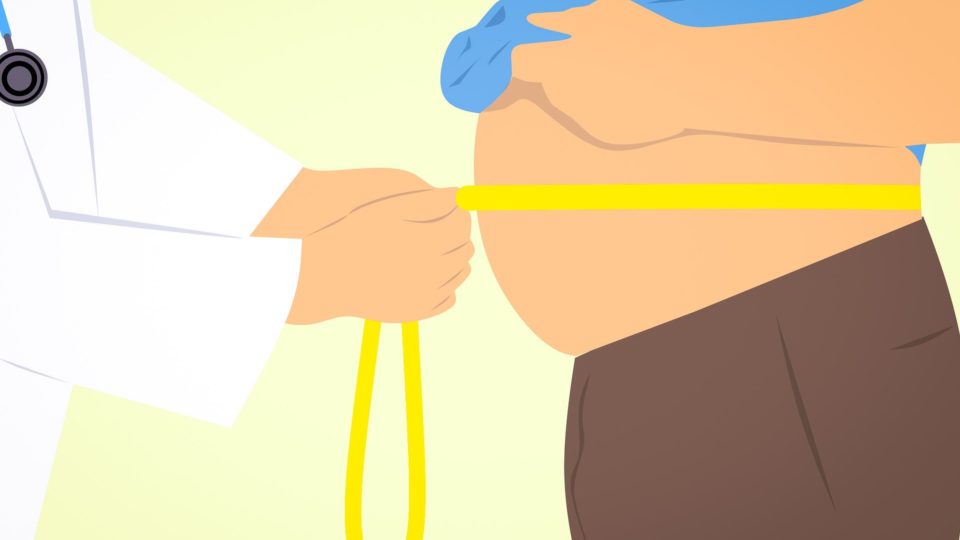The Two Types of Fat and How to Burn It
There are two types of fat that can change body shape and health, and they are visceral and subcutaneous. One you can reduce with exercise, but with the other, exercise alone will not be enough to reduce it. Everyone has some fat on their body and we women are made to carry more fat than men. Aren’t we lucky ladies? Not all fat is bad since it helps the body with many important functions (a topic for another blog post). It’s when the fat accumulates either in the wrong places, or enough to change your shape, and ultimately your health that it becomes a problem. Understanding the two types of fat and how to reduce the excess is what we will discuss here.
Learning the types of fat you have in excess, and what it takes to reduce them are key concepts to understand because one you can burn with exercise but the other takes both dietary action and exercise to rid yourself of it. Let me explain by defining each type of fat and how to reduce each of them on your body.
First type: Visceral adipose tissue, or VAT for short. VAT is found deep in the body and accumulates in the belly and around internal organs. A study by Harvard Health reports 10% of all body fat is visceral and mostly found in the abdominal cavity. It is the type of fat that when in excess, creates the apple shape body. A waist size greater than 35 for a female increases your risk of health problems due to visceral fat. Harvard T. H. Chan School of Public Health article also states the risk of health problems increases for men with a waist size greater than 40. (1)
What are the health risks with VAT besides creating the apple shape body? According to the National Institute of Health, (NIH) VAT secretes all kinds of signaling hormones, cytokines, xenoestrogens, and other substances causing disturbances with insulin and creating insulin resistance, increasing blood pressure, increased risk of stroke, heart attacks, heart disease, type 2 diabetes, breast cancer, colon cancer and Alzheimer’s. (2) That is a whole lot of incentive to lose belly fat! When you reduce your belly fat, you will lower your risk for disease and change your body shape moving closer to the ideal shape for women which is the hourglass shape or the V-shape for men.
Do not stress out too much about this since stress leads to elevated cortisol and too much cortisol leads to weight gain. Guess where this weight gain likes to go? Yep. In the belly! If you are female and doing everything right like exercising and eating well, then your struggle with belly fat is likely a stress management issue more than a diet and exercise one. Check-in with yourself, are you feeling overwhelmed, burned out, or nutritionally depleted? Trouble sleeping? Short fuse? This is stress and must be managed in order for cortisol to decrease and insulin to become more sensitive. Daily walking and weight training exercises can reduce stress and will help to lower VAT by burning this fat and building muscle. That is a win-win!
Second type: Subcutaneous fat or SubQ fat and it is just under the skin. It is the fat that loves to hug your thighs, butt, and lower belly creating the pear shape body. Anyone that has tried to lose those “love handles” knows what I am talking about! SubQ fat is stubborn fat that exercising alone will not be enough to make any real difference in shape change. Dietary changes and exercise are needed for altering your shape with this type of fat. One reason why SubQ fat is stubborn especially for females is due to the number and type of receptors found on these fat cells.
Insulin shuttles in sugar to store in fat cells and adrenaline helps to release fat using two types of receptors-alpha adrenergic receptors and beta receptors. In simplified terms, the alpha receptors are smaller and therefore release less fat whereas the beta receptors are larger and release more fat. Guess which type of receptor is found in higher quantities on females’ SubQ fat cells? Yep, there are more alpha-adrenergic receptors than beta receptors and why this fat is so stubborn to burn.
To burn this stubborn fat, a protocol of lifestyle changes including the right meal plans for you to help control insulin, so that on the front-end fat is not continually stored in these areas. And on the back end, the right kind and amount of movement and exercise to burn the fat along with leisurely walking 60 minutes or more a day to help lower cortisol which also helps to lower insulin.
Creating a protocol that fits your needs and your health and fitness goals will be different for everyone and why an individual plan is the key to feeling and looking your best.
1 https://www.hsph.harvard.edu/obesity-prevention-source/obesity-definition/abdominal-obesity/
2 Factors Associated with Visceral Fat Loss in Response to a Multifaceted Weight Loss Intervention

